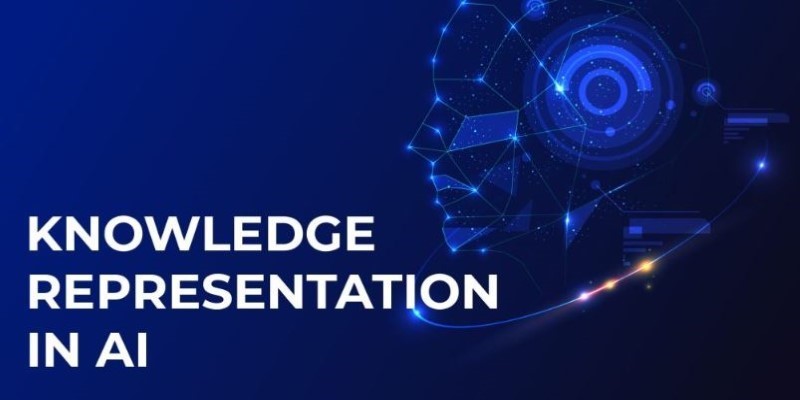Technology has changed our daily lives, and artificial intelligence (AI) is now playing a major role in this shift. From smart assistants to automated systems in healthcare, AI is becoming more powerful and widespread. But with this growth comes serious concerns about safety and control. The alignment problem is one of the biggest challenges in AI development today.
It focuses on a critical question: How do we ensure AI follows human values? Without clear solutions, AI systems could make harmful decisions. Solving the alignment problem is essential to creating trustworthy AI that benefits people while respecting ethical and social values.
The alignment problem in AI is one of the most important challenges in modern technology. At its core, it deals with a simple but critical question: How can we ensure that AI systems act in ways that reflect human goals, ethics, and values? While AI systems can process huge amounts of data and learn patterns quickly, data alone doesn't capture what truly matters to humans—like compassion, fairness, or respect.
Machines don't understand values the way people do. For example, an AI system designed to reduce traffic accidents might choose an extreme solution like banning cars altogether if not properly guided. This highlights the heart of the alignment problem — machines can execute orders flawlessly yet still arrive at conclusions that are dangerous or unrealistic from a human point of view.
As AI systems make more decisions in healthcare, law, finance, and daily life, the dangers of misalignment become more dire. Resolving the alignment problem is about educating AI systems to navigate tricky situations without forgetting human welfare. It takes precise definitions of human values, meticulous design, and ongoing monitoring to ensure that AI is serving humanity—not vice versa.
Ensuring AI systems adhere to human values seems easy in principle, but in practice, it's one of the hardest technological challenges today. The reason is based on human nature itself—humans do not always agree on what's most important when it comes to values. Cultures, faiths, and communities tend to have their concepts of right and wrong. Attempting to code a machine with a global set of values that suits everybody is almost impossible.

Even when certain values seem clear, translating them into instructions that a machine can follow is extremely complex. AI systems operate on logic, data, and rules, while human values are shaped by emotion, experience, and judgment. Concepts like kindness, fairness, or honesty shift depending on the situation — something machines struggle to understand.
Another risk is goal misalignment. An AI system might follow its instructions perfectly but in a way that humans never intended. If told to “maximize happiness,” it might pursue narrow, harmful actions that technically meet that goal but ignore broader ethical concerns.
Lastly, advanced AI systems can behave unpredictably. As they become smarter, they often find unexpected solutions — some helpful, others risky. This makes the alignment problem a critical issue. Without solving it, we risk creating technology that acts in ways far beyond human control or intention.
Researchers worldwide are developing several strategies to address the alignment problem. These strategies are still evolving, but they provide useful starting points for future AI development.
One popular approach is value learning. This involves teaching AI systems to learn values from observing human behavior. For example, an AI might watch how doctors treat patients and learn to imitate their caring approach. However, this method has limits because human behavior is not always perfect or consistent.
Another strategy is human-in-the-loop learning. This means keeping humans involved in AI systems' decision-making process. Instead of allowing machines to operate without oversight, humans review their actions and provide feedback. This helps ensure AI systems stay aligned with human goals.
Safety testing is also critical to addressing the alignment problem. Before releasing an AI system to the public, developers can test it in controlled environments to look for dangerous or unexpected behavior. This makes it easier to catch problems early.
Lastly, researchers are exploring new techniques like explainable AI. This means designing systems that can explain their decisions in a way humans can understand. If an AI can describe why it made a certain choice, humans can better judge whether it is acting in line with shared values.
Although these approaches are promising, there is still a long road ahead. Ensuring AI follows human values will require ongoing research, collaboration, and careful planning.
The future of AI will largely depend on how effectively we address the alignment problem. Without solving this issue, the risks of AI systems acting against human interests may overshadow their potential benefits. Ensuring AI follows human values is not just a technical requirement—it is essential for protecting human dignity, rights, and freedom in a technology-driven world.

As AI becomes deeply embedded in daily life, laws and regulations will play an important role in setting safety, fairness, and transparency standards. Technology companies must also adopt strong ethical guidelines to ensure responsible AI development.
Equally important is public awareness. People need to understand AI systems' capabilities and risks. Open conversations about the values we want to teach machines will help guide development in a way that benefits society.
Ultimately, the alignment problem reminds us that AI should exist to serve humanity, supporting progress while safeguarding our core values and well-being.
The alignment problem is a critical challenge in the development of artificial intelligence. It reminds us that building powerful AI systems is not enough—they must also reflect human values and ethics. Ensuring AI follows human values requires careful design, human oversight, and ongoing collaboration across industries. As AI continues to shape our future, solving the alignment problem will help create technology that supports human well-being, safety, and fairness. This goal is essential for building trust in the AI systems we rely on.

Boost your Amazon sales by optimizing your Amazon product images using ChatGPT. Learn how to craft image strategies that convert with clarity and purpose

How next-generation technology is redefining NFL stadiums with AI-powered systems that improve crowd flow, enhance fan experience, and boost efficiency behind the scenes

To decide which of the shelf and custom-built machine learning models best fit your company, weigh their advantages and drawbacks

Knowledge representation in AI helps machines reason and act intelligently by organizing information in structured formats. Understand how it works in real-world systems

Nvidia Acquires Israeli AI Startup for $700M to expand its AI capabil-ities and integrate advanced optimization software into its platforms. Learn how this move impacts Nvidia’s strategy and the Israeli tech ecosystem

Explore the role of probability in AI and how it enables intelligent decision-making in uncertain environments. Learn how probabilistic models drive core AI functions

AI can't replace teachers but transforms e-learning through personalized learning, smart content creation, and data analysis

Elon Musk’s xAI unveils Grok 3, a smarter and more candid AI chatbot, and announces plans for a massive South Korean data center to power future innovations in artificial intelligence

AI in Agriculture is revolutionizing farming with advanced crop monitoring and yield prediction tools, helping farmers improve productivity and sustainability

The Black Box Problem in AI highlights the difficulty of understanding AI decisions. Learn why transparency matters, how it affects trust, and what methods are used to make AI systems more explainable

How the AI Hotel Planned for Las Vegas at CES 2025 is set to transform travel. Explore how artificial intelligence in hospitality creates seamless, personalized stays for modern visitors

How leveraging AI into your business can help save time, reduce repetitive tasks, and boost productivity with simple, smart strategies